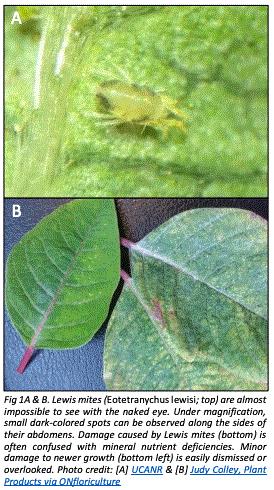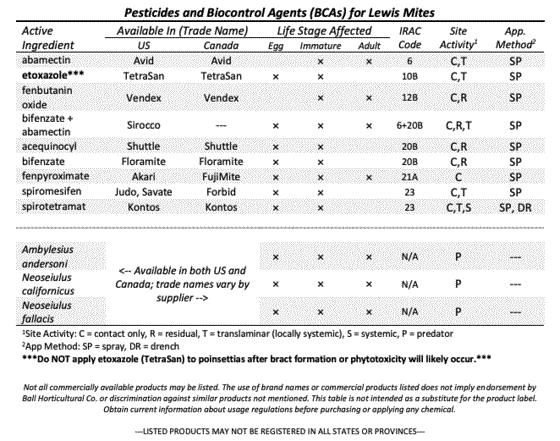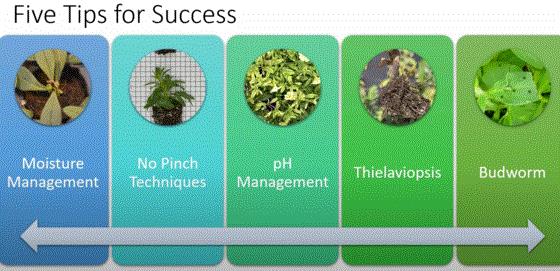NEW PODCAST! Artificial Intelligence in the Green Industry
In Tech On Demand podcast EPISODE 202, I was joined by Clint Albin, industry strategist and co-founder of A24 Consulting, to discuss the use of artificial intelligence (AI) in the greenhouse and garden center industry. Clint and I have been friends for a long time, so I’m sure the conversational nature of this episode come through pretty clearly as we explore the challenges faced by green industry businesses—topics like seasonal fluctuations and changing consumer behaviors and how AI can provide solutions to enhance customer engagement and streamline operations—what Clint refers to as “the front door and the overhead door.”

Clint emphasized the importance of integrating AI thoughtfully and creatively into existing processes, the need for immediate customer feedback, and some potential risks associated with AI implementation. Since this is just the first part in a multi-part miniseries I’ll record over the next few months, Clint closed by sharing insights on future Green Profit articles and podcast topics related to procurement and local marketing strategies, highlighting the significance of innovation in the horticulture sector.
Here are some key takeaways from part 1:
-
AI can empower green industry businesses of all shapes and sizes—greenhouses, garden centers and landscapers.
-
Our industry faces challenges due to seasonal business cycles, and implementing AI strategies can offer interesting solutions to these challenges.
-
We need to increase customer visits to garden centers, and AI can create unique opportunities to drive engagement.
-
Immediate customer feedback is crucial for improvement and it’s more important now than ever before—and expected.
-
AI should not be applied to broken systems.
-
The essence of abundance in AI can save time or make money.
-
A policy on AI usage is necessary for each business, and it should be addressed sooner than later.
-
Understanding customer needs is always a key to success, whether related to AI or just as a part of “customer experience.”
This podcast supplements an article series in Green Profit magazine.
Why You Need AI, No Matter Your Size (September 2025): https://www.greenprofit.com/Article/?articleid=27544
AI: Gaining Back Time (October 2025): https://www.greenprofit.com/Article/?articleid=27602
Listen on all the major podcast apps! Links to Spotify and Apple Podcasts are below. And make sure you subscribe so you never miss an episode. If you can, leave a positive review to help us reach more greenhouse professionals. And jump back into the archives because we have more than 200 episodes covering a huge range of topics.

Nick’s Tip of the Week: Lewis Mites Remix
Each week, I’ll work with my buddy Nick Flax, a technical services expert at Ball, to share a concern that’s come up during one of his numerous calls with growers across North America. This week, he’s re-sharing tips and tricks for controlling Lewis mites on your poinsettia crop that we shared in this newsletter almost one year ago to the day. In other words, this pest seems to be back in 2025!
PROBLEM: Lewis mites (Eotetranychus lewisi) might not be considered a major pest of floriculture crops, but they certainly appeared in North American greenhouses last fall during poinsettia production season. And like I explained last year, infestations early in the crop cycle can be managed with minimal impact to crop quality, but unmanaged populations can create significant challenges for you as crops approach finish.

NICK’S TIP: Scout your poinsettias thoroughly and ramp up control measures ASAP if signs of Lewis mites appear. I’ll share some identification tips, management protocols and control strategies in case you spot these pests again this fall.
Identification
Lewis mites are about 0.3 mm in length at mature size and range from green to yellowish in color as immatures but develop to a light orangish color as they mature.
Unlike two-spotted spider mites (TSSM; Tetranychus urticae), Lewis mites lack the (proportionally) large, dark-colored spots on their abdomens or other eye-catching identification traits.
Due to their size, magnification is necessary to scout for Lewis mites effectively. Use at least a 20x magnification hand lens when scouting suspicious plants.
Lewis mites tend to congregate along leaf veins or edges as populations grow. Eggs are laid on the undersides of leaves and start off clear in color but develop to a milky white color before they hatch.
Stippling damage caused by Lewis mites is often faint in the early stages of an outbreak and mimics mild chlorosis in poinsettias. NOTE: Since feeding is frequently concentrated along veins as populations grow, many growers mistake these symptoms for mineral nutrient deficiency symptoms.
Life Cycle
Lewis mites have one larval and two nymphal stages before they mature into adults. They can complete their life cycle in about 14 days at an average daily temperature of 77F (25C). In contrast, TSSM can complete their life cycle in as few as few as 3 days under optimal temps. Adult Lewis mites lay as many as 90 eggs per month, although much slower than TSSM, which can lay about 100 eggs in 10 days.
The comparatively slow life cycle of Lewis mites contributes to why populations often go undetected until crops are mature. Once populations reach a critical mass, webbing is visible, and damage is severe; affected plants may be unsalable.

Management Strategies
Due to the sporadic incidences of Lewis mite outbreaks, it’s not typical for growers to implement dedicated preventative measures for them. Those of you who utilize conventional insecticide-based IPM strategies should lean on early scouting and detection efforts to prevent major damage or losses. Implement an appropriate miticide spray rotation ASAP when a Lewis mite infestation is confirmed.
If your IPM strategy focuses on the use of biological control agents (BCAs) and conventional miticide sprays are necessary to curb an outbreak, consult your BCA supplier(s) to develop measures that knock down Lewis mite pressure effectively while minimizing negative impacts to BCAs that manage other target pests in your operation.
Control Measures
Before you apply anything to control Lewis mites, always read the label and follow all instructions regarding the number of times a given active ingredient may be applied to a single crop. Also be sure to:
-
Use controls that target multiple life stages.
-
Rotate IRAC groups between every miticide application.
-
Use a combination of systemic, translaminar and contact miticides to ensure full coverage.

NEW VIDEO! Growing Your Best Begonias
Syngenta Flowers’ Dr. Brian Krug and Dr. Jamie Gibson are two of my favorite presenters when it comes to crop culture, and both gents joined me TO DISCUSS THE EXCITING WORLD OF BEGONIAS, focusing on both vegetative and seed varieties.
Brian and Jamie explored the latest introductions, production best-practices and the importance of lighting and PGRs in growing high-quality begonias. Their presentation highlights the growing popularity of begonias in gardening and their versatility in various applications.

One of Syngenta's top new introductions at California Spring Trials in 2025 was iCandy, a vegetative series of hybrid begonias for quarts and up—with double flowers and dark foliage—and Brian spends time detailing production best practices before moving on to other vegetative series, including Adora (perfect for baskets), Birthday Bash (more traditional, with waxy foliage and double flowers) and Florencio (a boliviensis hybrid).
Then Jamie goes through tips and tricks for producing a few newer seed-raised series from Syngenta, including Bossa Nova (boliviensis type), Bionic (large, interspecific landscape type) Tophat (early-to-flower interspecifics with huge flowers) and Limitless (tuberous).
For each series, Brian and Jamie discuss production recommendations from propagation through finish—including lighting protocols, PGR regimes, temperature requirements and much more. They even cover strategies to reduce the risk of blind cuttings.
Check out the VIDEO and share it with your production team because, as I always say, getting everyone on the same page is half the battle.

NEW VIDEO! Leveling Up Your Calibrachoa Game
Ball Seed Technical Services Specialist Chris Ferguson has five tips to help you TAKE CALIBRACHOA PRODUCTION TO THE NEXT LEVEL. When I heard him share this info at a meeting this summer, I knew it would make a good video.

We’ve released videos in the past covering crop culture for calibrachoas, and most of you have grown them successfully. But for such a major floriculture crop with new genetics coming to market every year, discussing some of the nuances and new techniques (like chemical pinching) is solid “continuing education” to help you and your team prepare for 2026 production and hopefully avoid some common pitfalls.
SPOILER ALERT: Here are Chris’ five tips. Watch the video (or listen to podcast episode 203) for much more detail!
-
Irrigation—water by weight
-
Pinching—chemical vs. mechanical
-
pH Management—not above 6.2!
-
Thielaviopsis—know your spores
-
Tobacco Budworm—scout and treat ASAP
Upcoming Event: 2025 Ohio Floriculture & Nursery Conference
Attention growers in Ohio, Michigan, Indiana and Pennsylvania (or anyone else who can make it to Columbus in a couple weeks or would like to join online): this year’s Floriculture & Nursery Conference is coming up! I attended this meeting last year and will happily vouch for the high-quality speakers and topics in a fantastic, collaborative environment.

Join industry peers on October 16 at The Ohio State University for this amazing event hosted by Dr. W. Garrett Owen, associate professor of sustainable greenhouse nursery systems. It will feature top-notch presenters sharing the latest research findings and how those findings can be applied to modern greenhouse production.
Here’s a sampling of what you can expect:
-
Innovations in the Growing Media Market—Keynote speaker, Dr. Brian Jackson from NC State
-
Biostimulants: Applications for Floriculture Production—Dr. Michelle Jones (D.C. Kiplinger Endowed Chair) from OSU
-
Advances in the Detection and Identification of Major Insect Pests of Greenhouse Crops—Dr. Luis Cañas from OSU
-
Back to Basics: Pesticide Safety and Regulations—Dr. Mimi Rose from OSU
-
Better Crops with a Smaller Energy Bill—Dr. Peter Ling from OSU
LEARN MORE HERE and find registration links (in-person is only $70 and online is $40) and consider attending or sending team members who would benefit from the excellent speakers and timely topics.

Finish Line … #200!
I have to brag a little bit (which is definitely unlike me …) because my Tech On Demand podcast reached a significant milestone in the past week—the 200th episode!

I listen regularly to a handful of podcasts, and most of them have been around for years and have hundreds of episodes in their archives—one has more than 1,000! But statistics show fewer than 3% of podcasts reach 200, with only 48% making it to even 10. So I think 200 episodes, covering a pretty niche topic within a specialized industry, is pretty cool. And now we’re up to 203 with no plans of stopping anytime soon.
Of course, I could just sit in my basement “studio” with a microphone and hit record and upload MP3s all day without an audience. But thanks to thousands of you who listen to and download the conversations with industry experts, important info is making its way into the industry via the Tech On Demand podcast platform.
If you’re a subscriber and regular listener, THANK YOU! I’m truly grateful. If not, that’s totally fine—maybe now’s the time to check out the pod. You can find Tech On Demand on all the major podcast apps—Apple Podcasts, Spotify and more. Here are links and it would be awesome if you’d subscribe and consider leaving a positive review.
Talk to you next week …




Please feel free to send your comments, constructive criticism and topic ideas to me at bcalkins@ballhort.com.

Bill Calkins
Editor - Tech On Demand
This email was received by you and 25,504 other fine subscribers!
If you're interested in advertising in Tech On Demand, contact Kim Brown ASAP and she'll hook you up.